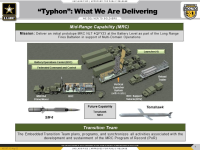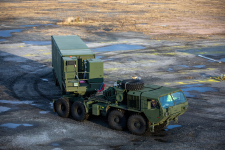
Army accepts delivery of first prototype MRC battery
Middle River, MD. – The US Army accepted delivery of the first prototype Mid-Range Capability (MRC) battery. The MRC provides a land-based, ground-launc...





TEXTRON’S BELL V-280 VALOR CHOSEN AS NEW U.S. ARMY LONG-RANGE ASSAULT AIRCRAFT
Bell Textron Inc., a Textron company, has been awarded the development contract for the U.S. Army’s Future Long-Range Assault Aircraft (FLRAA) program.news.bellflight.com

Northrop Grumman is developing a new derivative of its AGM-88G Advanced Anti-radiation Guided Missile-Extended Range, or AARGM-ER, designed specifically for surface-to-surface strikes against targets on land and at sea. The company says that the weapon leverages work it has already doing on both the AGM-88G, a U.S. Navy-led project, and a general air-to-surface derivative, the Stand-in Attack Weapon, or SiAW, which it is developing for the U.S. Air Force. It is also be designed with an eye toward being able to use a launch system installed inside a shipping container, a concept first unveiled for AARGM-ER three years ago that The War Zone
was first to report on.

Congress ultimately approved $80 million to accelerate arming Guam, including with the Patriot air-and-missile defense system and the Navy’s SM-6 and SM-3 missiles.
But a changing adversary means the service must develop further its own capabilities. The service is looking toward a more mobile architecture, one that can use mobile launchers.
One of those new technologies is the Mid-Range Capability missile. The missile will be fielded in 2023, more than two years since the Army announced that the service would pursue the capability.
The Army chose Lockheed Martin to integrate the Navy’s SM-6 and Tomahawk missiles with a launcher and battery operations center to create an MRC prototype back in November 2020.

The architecture will not be a fixed missile defense site like Aegis Ashore in Romania and Poland, Hill said during a Pentagon budget briefing. “Think of it as a distributed system.” He added that the agency is interested in using mobile launchers.
The architecture will include Navy SM-3 and SM-6 missiles, the Patriot air-and-missile defense system and the Army’s Terminal High Altitude Area Defense System (THAAD). A THAAD battery has been operating on Guam since 2013.



DARPA enters a new phase in creation of an aircraft with no exterior moving parts.
@AuroraFlightSci will design a full-scale X-plane that relies solely on changes in air flow for in-flight maneuvers.

 www.overtdefense.com
www.overtdefense.com
